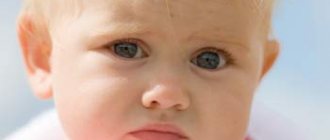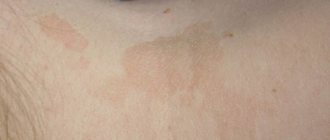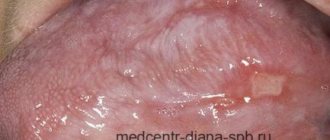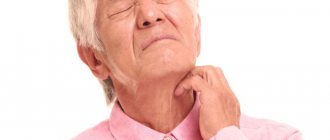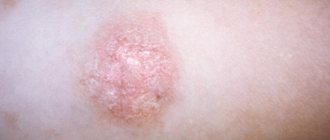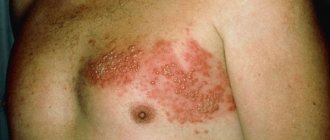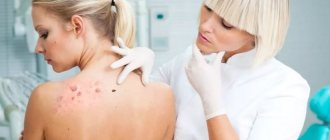The most common dermatological diseases include lichen - an infectious lesion of skin areas caused by the action of microscopic fungi or viruses. The danger of lichen is that it is easily transmitted by contact from person to person or from sick animal to person and has several varieties that require a special approach to treatment.
What kind of lichen occurs, what type of therapy is more effective in each specific case, how to avoid complications - this will be discussed further.
Pathogens and carriers of lichen
The content of the article
Dermatologists distinguish several types of lichen, caused by different pathogens.
Most often, the appearance of lichen on human skin is initiated by fungi:
- zooanthropophilic - transmitted to humans from an infected animal, including from pets;
- anthropophilic - live only on human skin;
- geophilic - live in the soil and come into contact with human skin upon contact with the ground.
In addition to fungi, viruses are often the causative agent of lichen. Their cunning lies in the fact that they can live asymptomatically in the human body for a number of years and become more active when the immune system is weakened. This is exactly how, for example, those familiar to many with herpes or shingles behave.
Complex of drugs
To eliminate lichen, complex treatment is required with medications taken externally and orally. And also with diet and physical therapy. The type of therapy depends on the causative agent of the lichen.
Overview of prescribed funds:
| Release form | Category | Name of medicines |
| Pills | Antihistamines |
|
| Painkillers |
| |
| Immuno-strengthening |
| |
| Vitamin complexes |
| |
| Antibiotics |
| |
| Antiviral |
| |
| Antifungal |
| |
| Ointments | Painkillers and anti-inflammatory |
|
| Hormonal |
| |
| Antibacterial |
| |
| Antifungal |
| |
| Antihistamines and antipruritics |
|
Independent choice of medications or their replacement is unacceptable.
Types of lichen
In order to cure lichen, it is not enough to make a general diagnosis. It is equally important to promptly determine the type of lichen, since each is characterized by its own symptoms and requires its own treatment.
Dermatologists distinguish the following types of lichen:
- shearer;
- encircling;
- pityriasis;
- pink;
- red flat;
- tubular;
- solar;
- scaly.
Only a competent dermatologist can draw a line between them and correctly prescribe a set of therapeutic measures. Therefore, under no circumstances should you self-medicate. The surest way is to go to the clinic at the first sign of deprivation.
Now about what changes in the skin should alert a person.
Folk
Having dealt with drug treatment, it’s worth talking about “grandmother’s methods.” Sometimes their advice for quickly treating lichen on the hands can come in handy.
There are such popular recipes for the treatment of lichen in folk conditions:
Onion juice. Rub intensively into the source of infection 2 times a day. The rim is rubbed especially carefully. The procedure continues until the symptoms of the disease disappear completely.
If lichen has affected the palms, then burdock oil is rubbed into them until completely absorbed. It is not recommended to wash your hands after the procedure for about 30 minutes.
You need to burn the newspaper, make a liquid from the ashes, add a little water and rub it on the affected areas.
All these simple procedures answer the question of how to easily cure lichen at home.
Ringworm
The source of trichophytosis - this is the second name for ringworm - can be any of the fungi that primarily affects the hairy parts of the body (head and beard), neck, shoulders, face. The symptoms of this type of lichen are usually as follows: first, swollen pink or red spots with clearly defined edges appear, then the edges of the spots become covered with bursting blisters and an itchy crust, and finally, the center of the spot begins to peel off, and the hair in the affected area breaks off and thins.
Ringworm is diagnosed using a Wood's lamp. If the disease is confirmed, the patient - children often suffer from ringworm - is protected from contact with others and is prescribed complex therapy, including taking special tablets (for example, Terbinafine) and the use of antifungal ointments. In particularly difficult cases, it is possible to take hormone-containing agents that help stop the inflammatory process on the skin.
Classification
Ringworm is an unpleasant disease, but it can be completely cured. There are even some types of lichen that do not require treatment and go away on their own.
In 2021, the most common types of lichen in humans are (see photo):
- Pityriasis, it is also known as "colored" or "variegated".
- Pityriasis rosea or Gibert's disease.
- Ringworm (aka “hairworm” or trichophytosis).
- Lichen planus, affecting the skin, mucous membranes, and, less commonly, nails.
- Scaly, popularly known as psoriasis.
- Shingles, sometimes called herpes.
- Microsporia. A highly contagious form that is often confused with ringworm.
Each type is caused by a specific pathogen and is subject to strictly defined treatment. The consequence of untreated lichen can be permanently disfigured skin or lost hair.
Herpes zoster
It is caused by a virus that remains “dormant” in the human body for the time being. It appears in the form of fluid-filled blisters, usually located in the intercostal part of the body. Associated symptoms of herpes zoster: pain (caused by damage to the intercostal nerve endings) and itching of the skin in the affected area; sometimes fever with chills, headaches.
Treatment of herpes zoster is complex. Since the blisters of shingles burst, they are initially treated with brilliant green. And to lubricate the crust that forms in their place, use dermatol ointment. In parallel, the doctor may prescribe antipyretic, painkillers and antiviral drugs, quartz and laser therapy.
Complications and consequences in adults, children, pregnant women
Ringworm in an advanced form, or if the patient ignores treatment, is dangerous for the development of many complications:
| In adults | In children | In pregnant women |
| Attachment of a secondary infection in the presence of open wounds from scratching the rash. | ||
| Transition of the disease into a chronic form with regular exacerbations. | ||
| Formation of scars and welts at the site of the rash. | ||
| Hair loss. In case of damage to the scalp of the epidermis. | ||
| Weakening of the immune system. | ||
| Damage to nerve endings. | ||
| Disruption of the activity of internal organs and systems when infection penetrates the circulatory system. | ||
| Deterioration of vision and hearing in the presence of rashes in the eyes and ears. | ||
| Deterioration of the skin condition. | When hair falls out, bald spots may not be covered with new “vegetation.” | Impaired fetal development when infection enters the circulatory system. |
| Spontaneous urination (if the bladder or nerve endings are damaged). | Risk of miscarriage or premature birth. | |
| Developmental delay due to infection of brain cells. | ||
In pregnant women and children, the body is in a weakened state, so it is more susceptible to infection with lichen and the development of complications. Additionally, this category is characterized by restrictions in the choice of medications due to side effects.
Pityriasis versicolor
It is also called multi-colored, because the small pink - and sometimes greenish - rash that appears on the back, stomach, shoulders, and chest changes color and turns brown as the disease develops. Moreover, on tanned skin (in summer) these spots appear discolored, but on white skin (in winter), on the contrary, they look quite dark.
Diagnosis of pityriasis versicolor can be carried out by a specialist who has resorted to microscopic examination of the dermis, Balzer iodine test, and Wood's lamp. He will also prescribe a special drug treatment (with the help of Orungal, Mycozolon, etc.) that can kill the fungus that causes the disease.
With proper therapy, pityriasis versicolor can be eliminated quite quickly (although without treatment, the disease drags on for many years). Additionally, the patient is recommended to adjust their lifestyle (a concomitant cause of this type of lichen may be increased humidity or air temperature), and carry out a complete treatment of clothing and linen.
Medication
Drug treatment involves visiting a dermatologist, followed by a series of tests and prescription of medications.
- Stye: causes, symptoms and treatment
Ringworm on the face - types, causes, symptoms, treatment and prevention. 115 photos and videos of disease manifestations
Ringworm on the leg - 125 photos of what lichen looks like, common lesions and video tips on choosing a treatment method
The following groups of drugs are widely used:
- antibiotics;
- hormonal ointments;
- antihistamines;
- vitamins.
Lichen rosea (or Zhibera)
A little-studied type of disease that usually develops against the background of a weakened immune system in the autumn or spring season. The risk group in this case consists of girls who have a hormonal imbalance in their body.
The manifestation of lichen is the appearance of round or oval pink and light brown spots on the chest, shoulders, back, sides, and skin folds. Dermatological changes, accompanied by itching and flaking of the skin, may go away on their own within a few weeks, however, when the first signs of the disease appear, it is recommended to consult a doctor to rule out the presence of syphilis similar in symptoms.
Symptoms
The first symptoms of lichen on the hands are the following:
- itching, discomfort and burning in areas of future lesions;
- the appearance of weeping watery blisters of various shapes;
- peeling of the skin;
- changes in the structure of the skin due to the appearance of plaques on it.
Lichen ruber planus
Flat multi-colored (from pale pink to purple) nodules of lichen red often appear on the mucous membranes, nails (they crumble), and delicate skin of the chest and abdomen. Their appearance is accompanied by severe itching, which, as a result of scratching, leads to the rapid growth of foci of skin damage.
Dermatologists find it difficult to determine the cause of the appearance of lichen red, but note that it is quite common in patients with diabetes, as well as those suffering from diseases of the stomach, liver, and biliary tract. Moreover, women over 40 years of age are primarily at risk.
Preventive measures
Prevention of ringworm is based on regular medical examinations of children attending preschool educational institutions. Parents should talk to their children about the inadmissibility of contact with stray animals. An important preventive measure is compliance with personal hygiene rules by patients of all age groups.
When purchasing pets, you must visit a veterinarian. The doctor will examine the cat or dog and give recommendations on how to eliminate any health problems with the pet. Following your veterinarian's advice will help prevent microscopic outbreaks within your family.
Tinea tubularis
Malasezzia is the name of the fungus that causes tubular lichen. This fungus can live in the human sebaceous glands for a long time without revealing itself in any way. Under certain conditions: for example, a decrease in immunity or an imbalance in the acid balance of the skin, severe hypothermia or excessive sweating, endocrine disorders or the development of certain chronic diseases - it begins to multiply intensively.
As a result, small flaky spots appear on the skin, which gradually grow and merge into one large spot. And although the victim practically does not feel itching or pain, he should not postpone a visit to the doctor.
After diagnosing the disease (methods used - scraping test, iodine test, use of a Wood's lamp, etc.), the dermatologist prescribes local or complex antifungal drugs.
Diagnostic measures
Diagnosis and treatment of ringworm are carried out by a dermatologist. The doctor examines the patient and identifies typical manifestations of microsporia. Examination of skin scrapings under a microscope reveals fungal mycelium and changes in the structure of hair and skin. Differential diagnosis makes it possible to exclude trichophytosis from the patient’s history, which has similar manifestations upon microscopy of the patient’s biomaterials.
Microflora culture appears to be a more informative diagnostic technique. Laboratory staff determine the type and genus of fungi. Based on the laboratory report, the dermatologist selects drugs that will cure the patient.
Luminescent examination makes it possible to identify pathological lesions on the skin of the patient and those living with him. This diagnostic method is based on the green glow of the fungal mycelium under the influence of a gas-discharge light source.
Ringworm solar
Under the influence of sunlight, excessive sweating, abuse of solariums and antibacterial agents, uneven, flaky dark spots may appear on the skin. Their occurrence is provoked by a fungus that multiplies on the dermis as a result of a violation of its acidity. Gradually, the spots grow to significant sizes, which causes aesthetic discomfort to a person: they clearly stand out against the tan. And although solar lichen is rarely accompanied by itching and pain, it requires mandatory therapy.
As a rule, solar lichen is diagnosed quickly: it is often enough to conduct an iodine test or use a Wood's lamp. At the initial stage of the disease, local antimicrobial drugs help well; in cases where the disease is advanced, the doctor prescribes complex therapy.
How to remove itching
Itching with lichen not only causes discomfort to the sick person, it can cause serious complications. Scratching the formations leads to the formation of ulcers, which, after completing the course of treatment, become scarred and have an unpleasant appearance. Bacteria penetrate into the wounds formed after scratching, which leads to the development of inflammatory processes. The resulting inflammation can lead to more severe skin diseases and blood poisoning.
When the lichen itches, it is recommended:
- Stick to a diet. It is necessary to exclude foods that are strong allergens from the diet.
- Refrain from scratching painful lesions.
- Avoid prolonged exposure to water; some forms of lichen are completely prohibited from getting wet.
- Use antihistamines.
- Take sedatives.
- Observe personal hygiene rules.
- Follow your doctor's recommendations for treating the underlying disease.
Hygiene measures
To carry out hygiene procedures, sick people must have their own personal body care items. It is required to strictly ensure that none of the family members use the patient’s towel, washcloth or soap. Rubbing the skin vigorously with a washcloth is prohibited for almost any type of dermatosis.
Affected areas must be thoroughly treated and washed using detergents containing medications. This rule does not apply to forms of lichen, in which contact of the lesion with liquid is strictly prohibited. To choose the right cleanser, you need to consult a dermatologist.
Antipruritics
The most common way to get rid of unpleasant sensations and prevent rashes from scratching are antihistamines and sedatives. Medicines to relieve symptoms are available in several forms:
- Tablets and drops for oral administration (Suprastin, Tavegli, Fenkarol, Claritin, Ketotifen). Many of them have the side effect of drowsiness.
- Creams, gels and ointments. These drugs are applied to the affected areas of the skin (Triderm, Triakutan, Kremgen, Fenistil, D-Panthenol, Nezulin).
Antipruritic drugs are usually not used for more than 2 weeks. The dosage and duration of administration are prescribed by the doctor.
For severe, debilitating itching, herbal sedatives (valerian, motherwort, Persen) are sometimes prescribed.
Treatment of the underlying disease
Treatment of dermatosis is the main and most effective way to relieve symptoms. As the lesions heal, they stop itching. After testing and determining the form of the disease, the dermatologist prescribes medications to treat it. For the treatment of lichen, complexes of various drugs are used.
Patients are prescribed medications that have antiseptic and antiparasitic effects. For local treatment of spots, use brilliant green, Fukortsin, hydrogen peroxide, and ointment with the antibiotic Levomekol. To treat lichen caused by various fungi, Clotrimazole is prescribed, which has a strong antifungal effect.
Along with medications that fight pathogens, patients are prescribed immune stimulation agents. This is due to the fact that lichen often occurs against the background of a weakened immune system, and strengthening it allows dermatosis to be cured more quickly.
Ringworm scaly
The causes and treatment of this lichen, better known as psoriasis, are not fully understood. However, it is noted that it appears more often in people suffering from diseases of the endocrine and nervous systems and prone to alcoholism.
Psoriasis is a chronic disease, often occurring latently, i.e. is hidden. First, small reddish spots appear on the skin - most often the bends of the legs and arms, lower back and buttocks, causing severe itching due to dryness. Gradually, the spots grow and turn into a lesion that affects a large area of the skin. The peculiarity of psoriasis is that when the plaque is removed, the lichen begins to bleed.
It is necessary to treat scaly lichen under the supervision of a doctor, who will select the necessary topical medications (when applying them, you must strictly follow the instructions), and, if necessary, prescribe antibiotics.
Prevention
To prevent the occurrence of the disease, the following rules must be observed:
- Limit contact with homeless animals.
- Eliminate bad habits from your life that reduce immunity (smoking, alcohol).
- Strengthen your immune system (exercise, personal hygiene).
- Start eating right (exclude fatty, spicy, salty foods).
- Avoid heavy nervous stress.
Are all types of lichen contagious?
Many people believe that absolutely all types of lichen are dangerous to others. Meanwhile, this is not entirely true. So, with pink, ringworm or shingles, the patient will really need to be isolated. But, for example, pityriasis or scaly ones are not dangerous for others.
And this is another reason why any change in the skin should be the reason for going to a specialist - only he will be able to correctly determine the type of lichen, assess the degree of its danger, give recommendations for treatment, and finally select a set of medications and therapeutic measures aimed at including general strengthening of the body.
If you find an error, please select a piece of text and press Ctrl+Enter
Factors influencing the intensity of itching
In any of its manifestations, lichen itches. Not all patients exhibit this characteristic in the same way. Sometimes the itching is mild, but more often it is a pronounced irritating symptom.
Several factors influence the intensity of itching:
- Type and form of lichen. Some varieties are accompanied by mild discomfort. Pink, red, pityriasis itches less often, the itching is less intense than that of ringworm and shingles.
- The size of the lesion and the depth of the skin lesion also influence the characteristics of itching. Superficial lichens cause less pronounced discomfort.
- Different people have different skin sensitivity thresholds. Feelings of the same intensity can be of different nature.
- The intensification of skin itching is influenced by liquid entering the affected areas of the skin. Sweat has especially high irritating properties; it makes the rash itch more intensely. People with excessive sweating experience more discomfort.
- Additional irritation of the affected areas of the skin with synthetic or woolen products increases the sensation and desire to itch.
